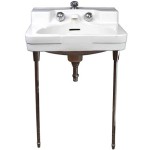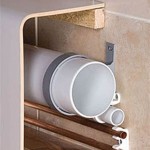Do Bathroom Exhaust Fans Need To Vent Outside? A Comprehensive Guide
Bathroom exhaust fans play a crucial role in maintaining a healthy and comfortable indoor environment. Their primary function is to remove excess moisture, preventing mold growth, structural damage, and unpleasant odors. However, the effectiveness of a bathroom exhaust fan is directly tied to its venting system. A common question that arises is whether these fans need to vent outside. This article delves into the reasoning behind venting bathroom exhaust fans outdoors, exploring the potential consequences of improper ventilation and outlining best practices for installation.
Why Venting Outside is Essential
The imperative to vent bathroom exhaust fans outside hinges on the properties of the air being expelled. Moisture-laden air, typical of bathroom environments during and after showers or baths, carries a significant amount of water vapor. This vapor, when released into unvented or enclosed spaces, has detrimental effects.
Firstly, releasing moist air within the house raises the overall humidity level. Increased humidity leads to condensation on cooler surfaces, such as walls, windows, and within wall cavities. This condensation creates an ideal breeding ground for mold and mildew. Mold spores thrive in damp environments and can quickly spread, causing health problems ranging from allergic reactions and respiratory issues to more severe infections. Furthermore, mold can damage building materials, necessitating costly repairs.
Secondly, venting exhaust into attics or crawl spaces can compromise the structural integrity of the house. Attics are often poorly ventilated, and the introduction of moist air exacerbates existing moisture problems. This can rot wooden beams, insulation, and roofing materials, leading to expensive structural repairs and reducing the lifespan of the roof. Similarly, crawl spaces are susceptible to moisture buildup, which can attract pests and lead to foundation issues.
Thirdly, many modern homes are built with tighter construction standards to improve energy efficiency. While this reduces drafts and lowers energy bills, it also traps moisture inside. Without proper ventilation, the humidity from bathrooms can accumulate quickly, negating the benefits of energy-efficient construction and potentially causing more significant moisture-related damage. Venting outside helps to maintain a balanced indoor environment, protecting the home and the health of its occupants.
The Consequences of Improper Ventilation
Failing to vent a bathroom exhaust fan outside can result in a cascade of problems, affecting not only the structural integrity of the house but also the health and well-being of its inhabitants.
Mold and mildew growth is a primary concern. As mentioned previously, the moisture-rich air vented into enclosed spaces provides the perfect conditions for these organisms to flourish. The visible signs of mold, such as black or green spots on walls and ceilings, are just the tip of the iceberg. Mold can grow behind walls and under floors, making it difficult to detect and eradicate. The cost of mold remediation can be substantial, often requiring professional services to remove the mold and address the underlying moisture problem.
Beyond mold, improper ventilation can lead to wood rot and decay. The constant exposure to moisture softens wood, making it vulnerable to fungal growth and insect infestations. This can weaken structural components, such as joists and rafters, potentially compromising the stability of the building. Repairing or replacing damaged wood can be a major undertaking, involving significant expense and disruption.
Furthermore, improper ventilation can exacerbate existing indoor air quality problems. Bathrooms often contain volatile organic compounds (VOCs) from cleaning products, personal care items, and other sources. Without proper ventilation, these pollutants can linger in the air, contributing to respiratory irritation and other health concerns. By venting outside, the exhaust fan removes these pollutants, improving indoor air quality and promoting a healthier living environment.
Finally, improper ventilation can reduce the efficiency of the exhaust fan itself. When the fan is forced to circulate air within an enclosed space, it works harder and consumes more energy. This can shorten the lifespan of the fan motor and increase energy bills. Venting outside allows the fan to operate efficiently, providing optimal ventilation without unnecessary strain.
Best Practices for Installation and Venting
To ensure optimal performance and prevent the problems associated with improper ventilation, it is crucial to follow best practices for installing and venting bathroom exhaust fans.
The most important step is to ensure that the exhaust fan is properly sized for the bathroom. The size of the fan is measured in cubic feet per minute (CFM), which indicates the volume of air the fan can move per minute. A general rule of thumb is to choose a fan with at least 1 CFM per square foot of bathroom area. For example, a 50-square-foot bathroom would require a fan with a CFM rating of 50 or higher. For bathrooms with high ceilings or particularly humid conditions, a larger fan may be necessary.
Once the correct size fan is selected, it is essential to choose the right venting materials. Rigid metal ductwork is generally preferred over flexible plastic ductwork, as it offers better airflow and is less likely to sag or kink. The ductwork should be properly insulated to prevent condensation from forming inside the duct, which can lead to moisture buildup and mold growth. The insulation also helps to reduce noise from the fan motor.
The venting should terminate outside the house, away from windows, doors, and air intakes. The ideal location for the vent termination is on the roof, as this provides a clear path for the exhaust air to escape. If venting through a sidewall, ensure that the vent is located at least 10 feet away from any openings and is equipped with a backdraft damper to prevent outside air from entering the ductwork. The vent should also be protected by a screen to prevent birds and other animals from nesting inside the duct.
Proper installation of the ductwork is crucial for efficient ventilation. The ductwork should be as straight as possible, with minimal bends and turns. Sharp bends can restrict airflow and reduce the effectiveness of the fan. All joints in the ductwork should be sealed with duct tape or mastic to prevent air leaks. If the ductwork passes through unheated spaces, such as attics or crawl spaces, it should be properly insulated to prevent condensation.
Regular maintenance of the exhaust fan is also important. The fan should be cleaned periodically to remove dust and debris, which can reduce its efficiency. The vent termination should also be inspected regularly to ensure that it is clear of obstructions. If the fan is not functioning properly, it should be repaired or replaced promptly.
Integrating a timer or humidity sensor into the exhaust fan system can further enhance its effectiveness. A timer allows the fan to run for a predetermined amount of time after the shower or bath, ensuring that all excess moisture is removed. A humidity sensor automatically activates the fan when the humidity level in the bathroom reaches a certain threshold, providing continuous ventilation and preventing moisture buildup. These features can help to optimize ventilation and protect the home from moisture-related damage.
By following these best practices, homeowners can ensure that their bathroom exhaust fans effectively remove moisture, prevent mold growth, and maintain a healthy indoor environment. Proper venting is not just a recommendation; it is a necessity for protecting the home and the health of its occupants.

Venting A Bath Fan In Cold Climate Fine Homebuilding

Blog

Inspecting The Bathroom Exhaust Internachi

Bathroom Exhaust Fans Must Be Vented Outside

Where Do Bathroom Vents Go Lopco Contracting Ri

Bathroom Exhaust Fan Gfci Vent Protection Requirements Checkthishouse

Inspecting For Air Sealing At Kitchen And Bathroom Exhaust Fans Internachi

How To Vent A Bathroom With No Outside Access

Do I Need To Vent My Bathroom Exhaust Fan The Outside Of House

How To Install A Bathroom Fan 7 Steps For An Easy Diy
Related Posts







